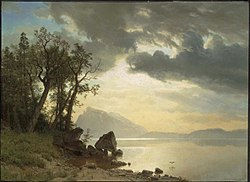Cement Craze
- Cheryl Anne Stapp

- Aug 31, 2022
- 4 min read

Thousands of people poured into California during the 1850s: gold miners, merchants, farmers, families, professionals and tradesmen of all kinds. After catastrophic fires caused by overturned kerosene lamps or neglected candles had ravaged virtually every settlement built of wood, they turned to brick as a safer building material. For that they needed mortar, but manufactured hydraulic cement was an expensive imported item, shipped around Cape Horn. Years later, its manufacture in California would beget whole towns.
Local deposits of limestone—a key ingredient of cement—were already known, dating back to the Mission Period when the Franciscan padres, following ancient tradition, burned lime and abalone shells in kilns. When crushed and mixed with sand or clay and water or milk the result, depending on the mix ratio, was an effective plaster for coating walls and ceilings, grout for sealing pipe joints; or a white paint.
Now new settlers found more of it, in Oroville, in Red Bluff, in the middle and north forks of the American River; in places aplenty. In Tuolumne County, there were reports of mountains of blue limestone rock, called gray marble by some. In Santa Cruz, two former gold miners found abundant high-quality limestone, established the firm of Davis and Jordan in 1853, commenced quarrying operations, and began shipping lime. Ten years later, Davis and Jordan was the largest lime manufacturing plant in the state. Nevertheless, in the first decade of statehood, Californians remained largely dependent on eastern-US-made cements. Another type of raw material, found at Benecia, was shell marl—rock made of fragments of seashells in a matrix of calcite and clay—utilized in the manufacture of cements between 1860 and 1880.
Surprisingly, California’s output of cement was relatively low for many years, until the use of Portland cement, an element of concrete as a structural material, became widespread in the late nineteenth century. Portland cement is not a brand name, but a type invented by an English stonemason named Joseph Aspdin in 1824: a high-temperature fusion of finely ground white limestone and divided clay, pulverized into a fine powder that produced very strong cement. It was the world’s first hydraulic cement—by definition, a powdery substance that hardens when water is added. Aspdin named his creation Portland cement, after a rock quarry that yielded exceptionally strong stone.
Quantity production of Portland cement in California began in 1894, with the opening of the California Portland cement plant at Colton, San Bernardino County. By the end of 1904, three more cement mills had come into production, cement dealers sprang up everywhere, and in 1908 the Henry Cowell Lime Cement Company opened near Mount Diablo in Contra Costa County.
Back in 1865, Henry Cowell had purchased Jordan’s half of the Davis and Jordan Company limeworks in Santa Cruz, renaming the firm Davis and Cowell. When Isaac Davis died in 1888, he acquired full ownership, later incorporated as Henry Cowell Lime and Cement Company. Henry wanted to build a town in Contra Costa County—a company town—which, of course, would be named Cowell. However, Henry died in 1903 from a gunshot wound, so it was his children who oversaw the creation and management of Cowell, a six-block village of shops, and duplexes with shared bathrooms.
One or more of the heirs imposed strict rules. Company mandates set bedtimes, company parties provided entertainment, and company decrees attempted to limit the consumption of alcohol in the homes of workers who lived in company houses. Controlling their employees wasn’t the only problem. From the beginning, local farmers fought against the company, because the plant’s smokestacks spewed smoke and cement dust that ruined their crops and compromised their health. (Cement is caustic—it burns on contact with skin and eyes, and the lungs if cement powder is inhaled.) The farmers won in 1933; in 1947 the workers went on strike and rather than accept unionization, the Cowell family temporarily closed the plant. It closed for good in 1959. All that remains now of a facility whose product built the Bay Area bridges is a 235-foot smokestack that towers over a modern housing development in Concord.
Cement, in Solano County, was another once-thriving company town. In 1901, the Pacific Portland Cement Company (PPCC) purchased land that contained both limestone and clay deposits, constructed one plant in 1902, and another in 1907. The facilities supported a workforce of 500, with fifty cottages for workers and their families; the first town in Solano County with underground utilities, a sewer system, electricity and running water. Cement also boasted a hotel, a post office, hospital, schoolhouse, fire station, livery stable, ice house, telephone exchange, and the shops of various merchants. The town farm raised cattle, sheep, chickens and pigs for local consumption. The popular Cement Ball was one of the most important social events of the year—but the plant shut down in 1927, and its usable equipment was shipped to other plants operated by PPCC, while the houses were sold and moved to Vacaville and Fairfield. The only visible reminders of Cement Hill, where the plant once sat, is the remnants of enormous rock crushing equipment, and a water tower.
In terms of public perception, lime enjoyed great popularity in the last part of the 19th and early 20th centuries, when its principal use was as a façade on banks, train stations, and other public structures; and as a main ingredient of cement added to sand and gravel to make concrete for bridges, sidewalks and basements. Lime is still important, and it has other, newer uses: in the manufacture of paper, varnish, glue, glass, paint, as a calcium supplement in livestock feed, and as a soil conditioner.
Today five states produce nearly 50% of the cement made in America, with California leading Texas, Michigan, Pennsylvania and Missouri.
Image: San Francisco Call May 4, 1890 – “City Characters – Cement Dealer”




Comments